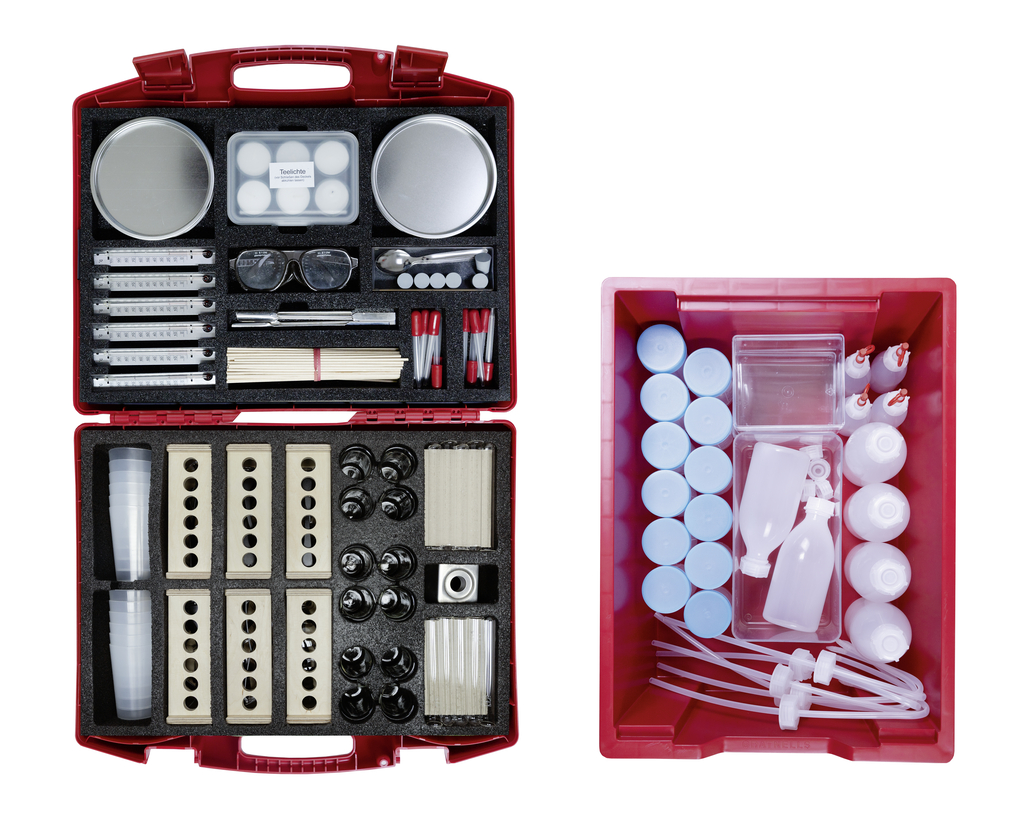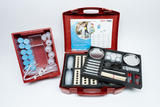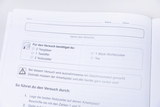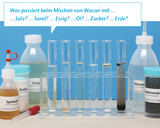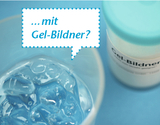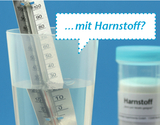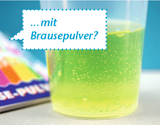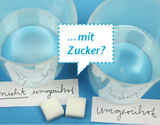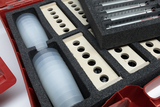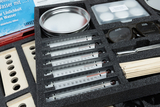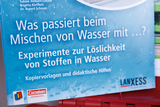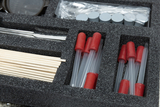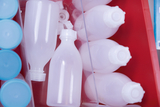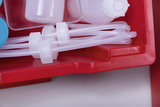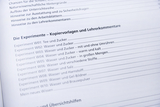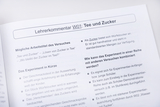Students kit Primary chemistry
Why does the sugar in the tea vanish after stirring? Why do blobs of grease float on the top of the soup while the noodles sink to the bottom? Why does sherbet dropped into water create a lot of fizz? For children water is part of their everyday lives. And they notice and watch these phenomena. Some of them – how substances behave in water – can be explored with this box.
By mixing water with various substances and conducting experiments under varying conditions, the students can investigate how the substances behave and identify any similarities or differences. This develops a systematic, networked and sustainable way of thinking that also gets students making the right connections and coming to the right conclusions.
The experiments follow a common theme, becoming increasingly difficult as they go on.
Age 10-12
Materials for 6 work groups (for 12 - 18 children)
The following topics are covered:
- Solubility in water in general
- Conditions governing solubility in water
- Water-soluble and water-insoluble substances
-
Reversing the dissolving process
through crystallization -
Thermal changes caused by dissolving
substances in water -
Changes in viscosity caused by dissolving
substances in water -
Formation of gas caused by dissolving
substances in water
Teacher’s manual ‘What happens when we mix water with ...?’
-
The manual includes basic information on the topic and the organization of workstations for the teacher.
It also contains information about the scientific background, didactic notes on each experiment and student worksheets. - Including a list of materials and rules for experiments.
With copy templates covering 10 workstations.
These experiments look at conditions affecting solubility. Variations and follow-up options are described in the teacher guidance sections.
This experiment lets students investigate the thermal changes that occur when certain substances are added to water.
The first experiment is designed for students with no previous experience of experiments. It uses common household materials. At this stage, the topic reflects everyday experiences and is an introduction to acting and thinking scientifically.
In this second experiment the students encounter the same phenomena, but with a stronger emphasis on laboratory-style work.
These experiments look at conditions affecting solubility. Variations and follow-up options are described in the teacher guidance sections.
These experiments look at conditions affecting solubility. Variations and follow-up options are described in the teacher guidance sections.
These experiments look at conditions affecting solubility. Variations and follow-up options are described in the teacher guidance sections.
This experiment revisits the theme of solubility before moving on to crystallization.
This experiment looks at the solidification of water caused by the addition of substances that form a gel.
This experiment leads into a new chapter of Research and Explore focusing on “sherbet”.
- 6 × Thermometer student type –3°C to +103°C
- 6 × Stand for 609401
- 12 × Dropping pipette, plastic
- 6 × Metal spoon, 138 mm
- 1 × Trough, plastic transp. 210x110x80 mm
- 2 × Plastic box 105x90x50 mm
- 6 × Glassholder for tealight
- 1 × Hinge box, 140x95x30 mm
- 1 × Tray 510x360x20 mm
- 1 × Plastic case ca.540x450x150 mm
- 1 × Carton for SEG (large tray)
- 6 × Metal plate, 150 mmØ
- 1 × Plastic box, 140x50x25mm
- 4 × Flask, PE, narrow neck 50 ml
- 6 × Flask, PE, narrow neck 250 ml
- 6 × Rubber stopper 18/14 mm
- 1 × Wooden sticks, 100 pcs. 200x3 mm
- 1 × Safety goggles
- 12 × Safety goggles, small design
- 1 × Storing tray, deep, red
- 1 × Lid for 75028 + 75038
- 1 × SEG Lidfoam, grey 20 mm
- 6 × Test tubes rack, perspex 6 tubes with rods
- 4 × Dropping-cap for 88444/45
- 12 × Plastic beaker with screw-top, 100 ml
- 6 × Spatula, Micro Powder
- 1 × Foam insert 1 for 90350, 500x360x45 mm
- 1 × Foam insert 2 for 90350, 515x370x95 mm
- 1 × Storing diagram,int.vers.
- 12 × Beaker, PP 280 ml
- 6 ×
- 1 ×
- 1 ×
- 12 ×
- 1 ×
- 6 ×
